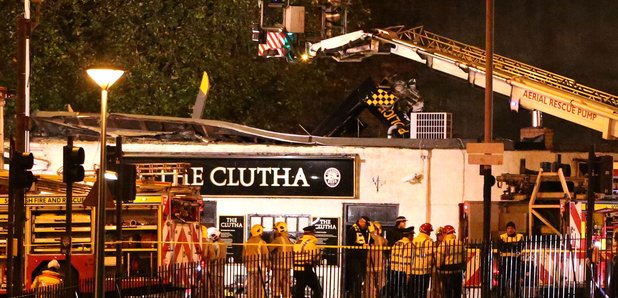Helicopter engineer 'did not see notice on fuel on fuel' indicator problems
17 May 2019, 15:11 | Updated: 17 May 2019, 15:14

An aircraft engineer who worked on the helicopter which crashed into a pub was not aware of an information notice about problems with fuel indicators, an inquiry has heard.
Pilot David Traill, two other crew members and seven bar customers died when the police helicopter crashed in Glasgow on November 29, 2013.
A Fatal Accident Inquiry was shown an information notice from helicopter manufacturer Eurocopter dated January 21, 2013, regarding water contamination of the fuel system in that type of helicopter.
It said that water concentrated between the metal tubes of the fuel level sensor may be enough to affect the signal to the display shown to the pilot.
Stuart Weir, an aircraft engineer at Babcock (formerly Bond) at the Glasgow City Heliport, was asked by Gordon Lamont, for the Crown, whether he remembered the notice.
He replied: "No. I know I've seen it since but I'm not sure when I first became aware of it."
Under cross-examination by Shelagh McCall QC, representing Mr Traill's fiancee, he was asked: "Was there a system in place to bring notices to your attention?"
Mr Weir answered: "There was not a system in place at the time to bring it to your direct attention."
The inquiry has previously heard that the pilot received five low fuel warnings during the flight before the helicopter crashed on November 29 and that the aircraft, an EC 135, experienced problems with fuel readings in the months before the incident.
The engineer told the inquiry that before 2002/03 when there was a problem with the fuel indication on the EC 135, the pictorial indication on the Caution and Advisory Display (CAD) would go from blue to black and people would know it was not reliable.
However, he said this changed after the aircraft went to Oxford to be upgraded around 2002/03.
Mr Weir said he raised the issue when he attended a course at Airbus in Germany in 2014 and was told that because the probes were now varnished it may have affected things.
He said: "They upgraded the fuel probes to improve their reliability. The man I spoke to said initially the first variant of the probe were bare metal and any water shot the circuit. But to improve reliability they varnished the cylinders so if water got in it would not short circuit, it would give an erroneous indication.
"It was supposed to be a better engineering solution."
The inquiry also heard that the helicopter, registration G-SPAO, had some technical difficulties on November 28, the day before the crash.
The "NR indicator" which counts the number of revolutions of the motor did not work when the engine started, and the landing light was not working.
Both problems were fixed that day.
More than 100 people were at the Clutha Vaults pub when the helicopter, returning to its base on the banks of the River Clyde, crashed through the roof.
Pub customers John McGarrigle, Mark O'Prey, Gary Arthur, Colin Gibson, Robert Jenkins, Samuel McGhee and Joe Cusker died, while pilot David Traill and crew Pc Tony Collins and Pc Kirsty Nelis were also killed.
The inquiry before Sheriff Principal Craig Turnbull has been adjourned until July 1 when it will continue in the temporary court at Hampden in Glasgow.






















